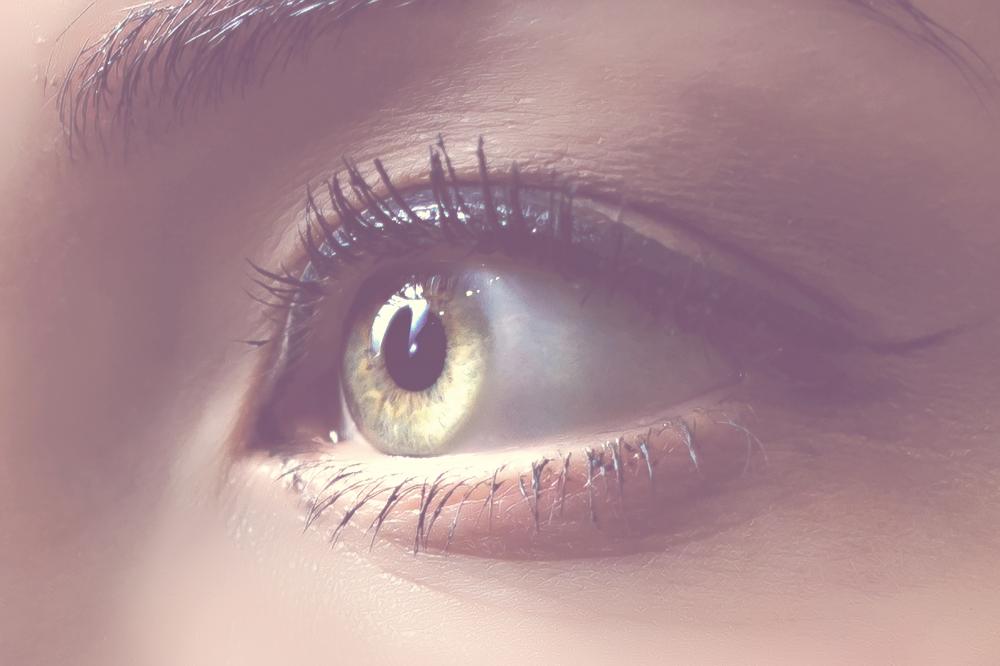Table of Contents
Understanding Eye Patches for Kids
The world of pediatric eye care is nuanced and complex, but when it comes to eye patches for kids, the premise is simple – they are tools for visual improvement and correction. Eye patches can be a crucial part of treatment for conditions like amblyopia, commonly known as lazy eye, which affects about 2-3% of children. Being at Fresnel Prism, we see firsthand the impact that a well-designed eye patch can have on a child’s vision and overall quality of life.
In this article, we’ll explore various facets of eye patches for kids, offering insights and personal anecdotes from our professional experiences. We aim to create a resource that resonates with both caregivers and healthcare providers alike.
The Purpose of Eye Patches
Let’s start by addressing the elephant in the room: why do some children need eye patches? In our practice, eye patches are prescribed to encourage the weaker eye to work harder by covering the stronger eye. This method is typically part of a treatment plan for amblyopia. By occluding the dominant eye, we encourage neural pathways to develop more robustly in the affected eye.
Another reason for patching can be to protect the eye after surgery or an injury. In such cases, eye patches for kids serve as a shield against infection and external irritants, while also keeping little fingers away from delicate healing tissues.
Selecting the Right Patch
Finding the right eye patch for a child goes beyond just picking out a design they might like – although that’s certainly important. The patch must be comfortable, hypoallergenic, and the right size for the child’s face. It should adhere securely but remove gently to avoid irritating the sensitive skin around the eye.
As someone who has helped countless families through this process, I always recommend considering the child’s skin type and any potential allergies. The material of the eye patch is also a critical factor; some are made from breathable bamboo, while others might be made from softer, hypoallergenic cotton blends.
Design Matters
Let’s not underestimate the power of a fun and engaging design. When kids can choose eye patches featuring their favorite colors, patterns, or characters, it transforms a medical device into a cool accessory. This small but significant aspect can greatly impact adherence to a patching regimen.
Having seen children’s reactions to various designs, I can vouch for the excitement that choosing their own patches can bring. It’s a simple way to give them a sense of control and autonomy over their treatment.
The Psychosocial Aspect of Patching
Wearing an eye patch isn’t always easy for children, who may feel self-conscious or different from their peers. It’s essential to provide emotional support and encourage a positive outlook on the patching process.
In my experience, involving children in the process and reinforcing the idea that their patch is a superhero’s shield or a pirate’s badge of honor can build confidence and resilience. I’ve also seen how peer support and education can break down barriers; when classmates understand the reason for the patch, they become allies instead of critics.
From these interactions, children learn valuable life lessons about diversity and acceptance, inspiring empathy and kindness in their communities.
Complementing Patches with Therapy
Wearing an eye patch is often just one part of a multifaceted approach to visual improvement. Vision therapy exercises, prescribed by an optometrist or an ophthalmologist, can enhance the benefit of the patch by actively engaging the weaker eye.

As professionals, we remind families that consistency in wearing the eye patch and completing exercises can lead to significant improvements. Each small step a child takes with their patch on is a leap towards better vision.
Success Stories and Motivation
Sharing success stories can be a powerful motivator for both kids and their parents. During consultations, I often recount tales of children who have seen significant improvements through diligent patching. These narratives not only offer hope but also reinforce the value of perseverance and commitment to the treatment plan.
Children love to hear stories about others just like them. By incorporating these tales into our discussions, we help build a supportive patching community that celebrates each child’s milestones.
Navigating Challenges with Eye Patches
Despite the best designs and intentions, challenges with patching can arise. Skin irritation, difficulty keeping the patch on during active play, and simply forgetting to wear the patch are some common issues.
We encourage parents to establish a routine around patching, perhaps integrating it with another daily activity to ensure it becomes a habit. For skin irritation, I recommend looking for patches with gentle adhesives and reminding parents that the skin needs time to breathe between patching sessions.
When Patching Becomes Difficult
There are times when children resist wearing their patches. In these moments, empathy and creativity are our greatest tools. Customizing the patch-wearing schedule to coincide with less active periods of the day or rewarding patching milestones can make the process more palatable.
At Fresnel Prism, we’ve seen the transformative power of a well-executed patching regimen, and we’re committed to supporting families every step of the way. Whether it’s finding the perfect patch or troubleshooting challenges, we’re here to help.
Looking Toward the Future
The world of pediatric eye care is ever-evolving, with advancements in treatment and technology continuously emerging. At Fresnel Prism, we remain at the forefront of these developments, ensuring that the eye patches for kids we recommend are not only effective but also incorporate the latest innovations.
The future promises even more personalized and sophisticated patching solutions, and we’re excited to be part of this journey. By staying informed and adapting to new methods, we hope to enhance the patching experience and outcomes for children worldwide.
Embracing Technology in Eye Care

Emerging technologies like smart patches, capable of monitoring wear time and eye movement, are on the horizon. These innovations have the potential to revolutionize treatment by providing real-time feedback to both parents and eye care professionals.
At our organization, we eagerly anticipate these advancements, recognizing the potential they hold for improving compliance and, ultimately, visual outcomes for children.
In concluding our exploration of eye patches for kids, it’s clear that while the concept is simple, the impact is profound. From design considerations to psychosocial implications, each aspect of the patching process is vital to its success. At Fresnel Prism, we are honored to support families on this journey towards clearer, more vibrant futures.
Does eye patching work for kids?
Eye patching can be an effective treatment for children, especially in cases of amblyopia, or lazy eye. By occluding the stronger eye, the weaker eye is forced to work, thereby strengthening its neural connections and improving visual acuity. In our experience at Fresnel Prism, we have observed significant improvements in children who consistently adhere to their patching regimen. The key is regular use and combining patching with prescribed vision therapy exercises for maximum benefit. A study published in the Archives of Ophthalmology found that children who strictly followed an eye patching treatment plan showed marked improvements in the vision of the affected eye.
Why do kids wear an eye patch?
Kids often wear an eye patch as part of a treatment strategy for conditions like amblyopia. By covering the dominant eye, the patch promotes usage of the weaker eye, which helps develop better vision in that eye. Additionally, eye patches can also act as protection for children who have had eye surgeries or injuries, safeguarding the healing process and preventing potential infections. We often tell kids that their eye patches are like shields, guarding their vision while it gets stronger each day.
How do I get my 2 year old to wear an eye patch?
Encouraging a toddler to wear an eye patch can be challenging, but it helps to turn it into a positive experience. At Fresnel Prism, we suggest selecting patches with fun designs or incorporating the patch into playtime, presenting it as a game or part of a costume. Establishing a routine is also crucial. Perhaps you can apply the patch during their favorite video or story time when they are more engrossed in an activity. Acknowledge and celebrate when they wear their patch, creating a reward system for their efforts. Remember, consistency and patience are key, and it’s about finding what resonates with your little one.
Does eye patching really work?
Absolutely, eye patching does work when properly applied as part of a comprehensive treatment plan for certain eye conditions. The effectiveness of eye patching is well-supported by clinical research. For instance, the Pediatric Eye Disease Investigator Group conducted a study that showed significant improvement in the vision of children with moderate amblyopia who followed an eye patching protocol. It’s essential, however, to follow the guidance of a healthcare professional and maintain a consistent patching schedule to see these positive outcomes.
Are there alternatives to traditional eye patches?
In our quest to advance pediatric eye care, we at Fresnel Prism have explored various alternatives to traditional eye patches. For example, there are eye patches that integrate with the child’s glasses, as well as atropine eye drops which temporarily blur the vision in the stronger eye to encourage use of the weaker one. Every child’s situation is unique, and some may respond better to alternative methods. It’s a conversation worth having with your eye care specialist, and we’re always here to provide expert advice and support tailored to your child’s needs.
How can technology advance the use of eye patches?
Technology holds incredible promise for the future of eye patches. We’re excited about developments like smart eye patches that can monitor wear time and eye movement, helping to ensure that treatment protocols are followed accurately. These devices can provide feedback to parents and eye care professionals, potentially improving compliance and outcomes. At Fresnel Prism, we keep our finger on the pulse of emerging technologies to ensure that we offer the most advanced and effective solutions to our clients.
How to address peer reactions to eye patches?
Peer reaction is an important consideration when a child wears an eye patch. At Fresnel Prism, we’ve found that education and support can make a world of difference. We encourage parents and teachers to talk openly about why the eye patch is needed, helping to foster understanding and acceptance among classmates. We also suggest empowering the child by involving them in the choice of their patch design and explaining how their “special gear” is helping them. Through sensitivity and awareness, we can create a supportive environment for all children to thrive.
Resources
- American Association for Pediatric Ophthalmology and Strabismus: Explore extensive resources on children’s eye conditions, including amblyopia, and treatment options like eye patches. Visit AAPOS
- National Eye Institute (NEI): Learn about the science behind eye health, read about current research on vision problems affecting children, and find educational materials. Visit NEI
- Prevent Blindness: Access a variety of materials and resources aimed at preventing blindness in children, including information on the importance of eye patches for certain conditions. Visit Prevent Blindness
- CDC Vision Health Initiative (VHI): Discover information from the Centers for Disease Control and Prevention on maintaining vision health in children. Visit CDC VHI
- Children’s Eye Foundation: Dedicated to ensuring that children receive proper eye care, this foundation offers support and resources for parents and caregivers. Visit Children’s Eye Foundation
- Orbis: An international non-profit focused on preventing and treating visual impairment, Orbis provides resources that can help parents understand the use and benefits of eye patches. Visit Orbis
- The Vision Therapy Center: Learn about vision therapy as a complementary treatment to eye patching for certain visual conditions in children. Visit The Vision Therapy Center

